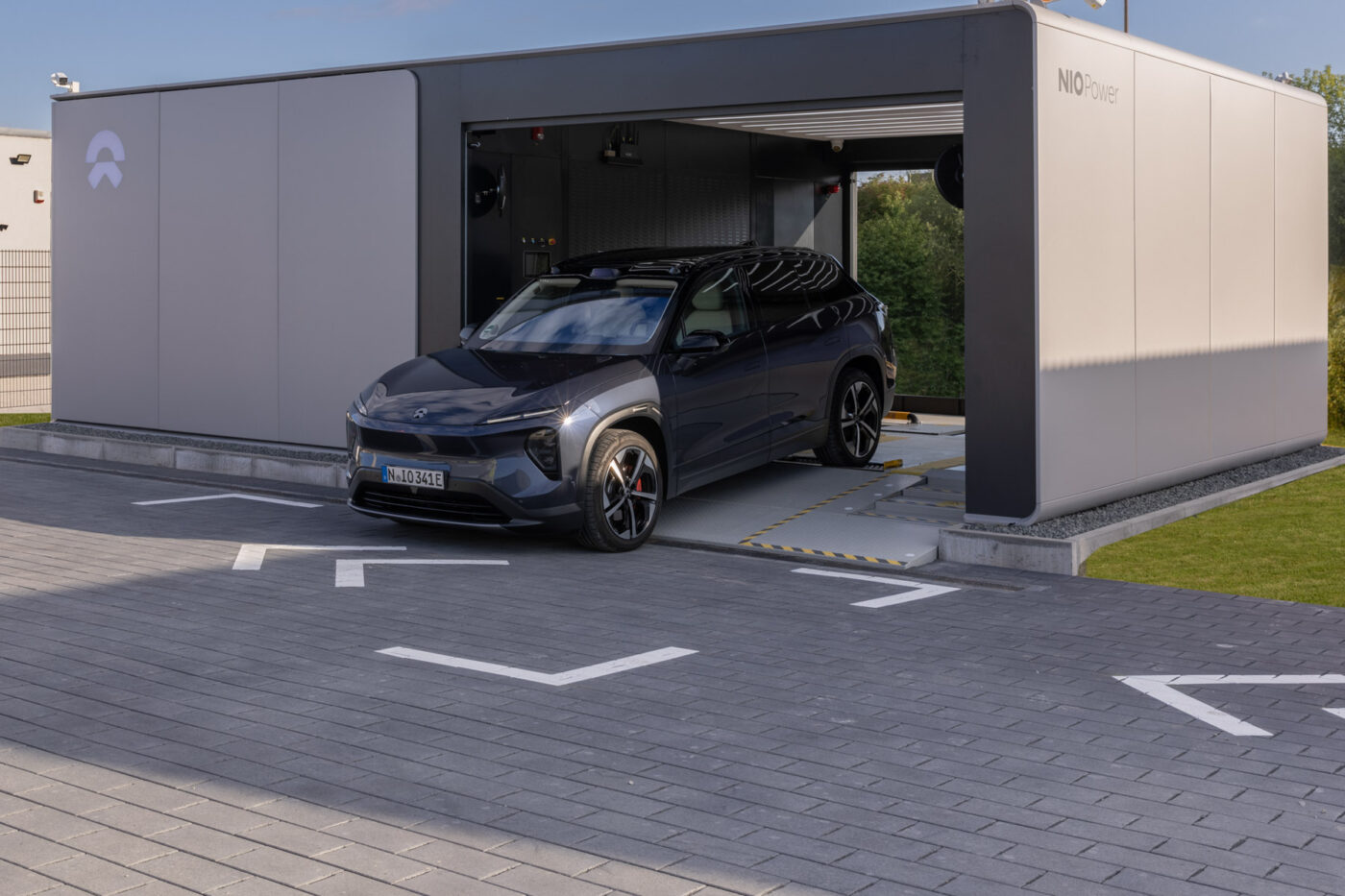
Changing batteries on long journeys: what is Nio’s Power Swap capable of?
Nio recorded only 338 new registrations in Germany in 2024 (as of the end of October). In the first ten months of 2023, the German Federal Motor Transport Authority KBA counted 1,174 electric cars from the manufacturer. Nio is currently in a difficult situation: sales figures in Europe do not meet expectations. The cars are good, as our test of the ET5 mid-size sedan last year and the driving report on the large EL8 electric SUV showed – even without the battery swap. However, in order to emphasise the outstanding feature of its own vehicles – the battery swap – high investments in the corresponding swap stations are necessary. That will hardly be worthwhile without a sufficient number of vehicles, so it is an uncertain investment in the future.
Or is that exactly what many drivers have been missing to make the switch to electric drives? Nio currently has 31 of the so-called ‘Power Swap Stations’ (PSS) in Germany, with more under construction. Compared to the number of petrol stations or fast chargers, this is of course negligible, but it is a start. But will this small network of charging stations be convincing by the end of 2024? And how big an advantage will it really be in practice?
We carried out the test with an EL6 with the long-range battery – i.e. 100 kWh gross. Over the course of just over 2,000 kilometres, we swapped the battery five times and also charged it from time to time. Before we get started, here are a few brief facts about the car: the EL6 is a 4.85-metre-long SUV and has a 360 kW all-wheel drive. Although the EL6 is only ten centimetres longer than a Tesla Model Y, it looks significantly larger – the high, beefy front and the high roofline with the steeply sloping rear make for a different appearance. The interior is high-quality and, as is typical with Nio, rather plain, while the chassis is designed for a high level of comfort – ideal conditions for many motorway kilometres.
Journey 1: Düsseldorf – Sindelfingen – Frankfurt – Düsseldorf
The first journey took us from Düsseldorf to Sindelfingen on a Tuesday in mid-November – Mercedes had invited us to the plant for a technology workshop on the upcoming MMA platform, the results of which you can read about here. From Sindelfingen, we travelled to the hotel in Frankfurt on the same day, as the first test drives with the new BYD Sealion 7 were scheduled for the next day – you can find the driving report here. After the BYD event, it was time to head back to Düsseldorf.
The day before leaving for Sindelfingen, Nio delivered the test car – with a charge level of 53 per cent. To plan the journey, we first looked at the Nio app. The presented plan sounded simple: swap the battery, which is still almost half full, at the Power Swap Station in Hilden, just 33 kilometres away, and just about make it to Sindelfingen with the new battery. But there are two catches. Firstly, the app seems to calculate with the WLTP range (529 kilometres), which we never reached in the test. And secondly, the app doesn’t know that I have to be in Sindelfingen at 10:30 a.m. But the PSS in Hilden was still closed – all Nio exchange stations are open seven days a week between 7 a.m. and 10 p.m. If I leave at 4:30 a.m. and arrive in Hilden at around five o’clock, the only option would be to go to the Tesla and Fastned fast chargers there.
The plan, the EL6 suggested the next morning, sounded more sensible: a charging stop at Fastned in Limburg shortly after 6 a.m., then a battery swap at the new station in Viernheim in southern Hesse, which had only opened a few days before our test drive. No sooner said than done: the motorway was clear for the first 170 kilometres to Limburg, as was the entire charging park at Fastned at this time of day. When I returned 25 minutes later after a visit to the local bakery, the EL6 had charged from six to 55 per cent – more than enough for the 120 kilometres to the battery swap in the car park of the Rhein-Neckar-Center.
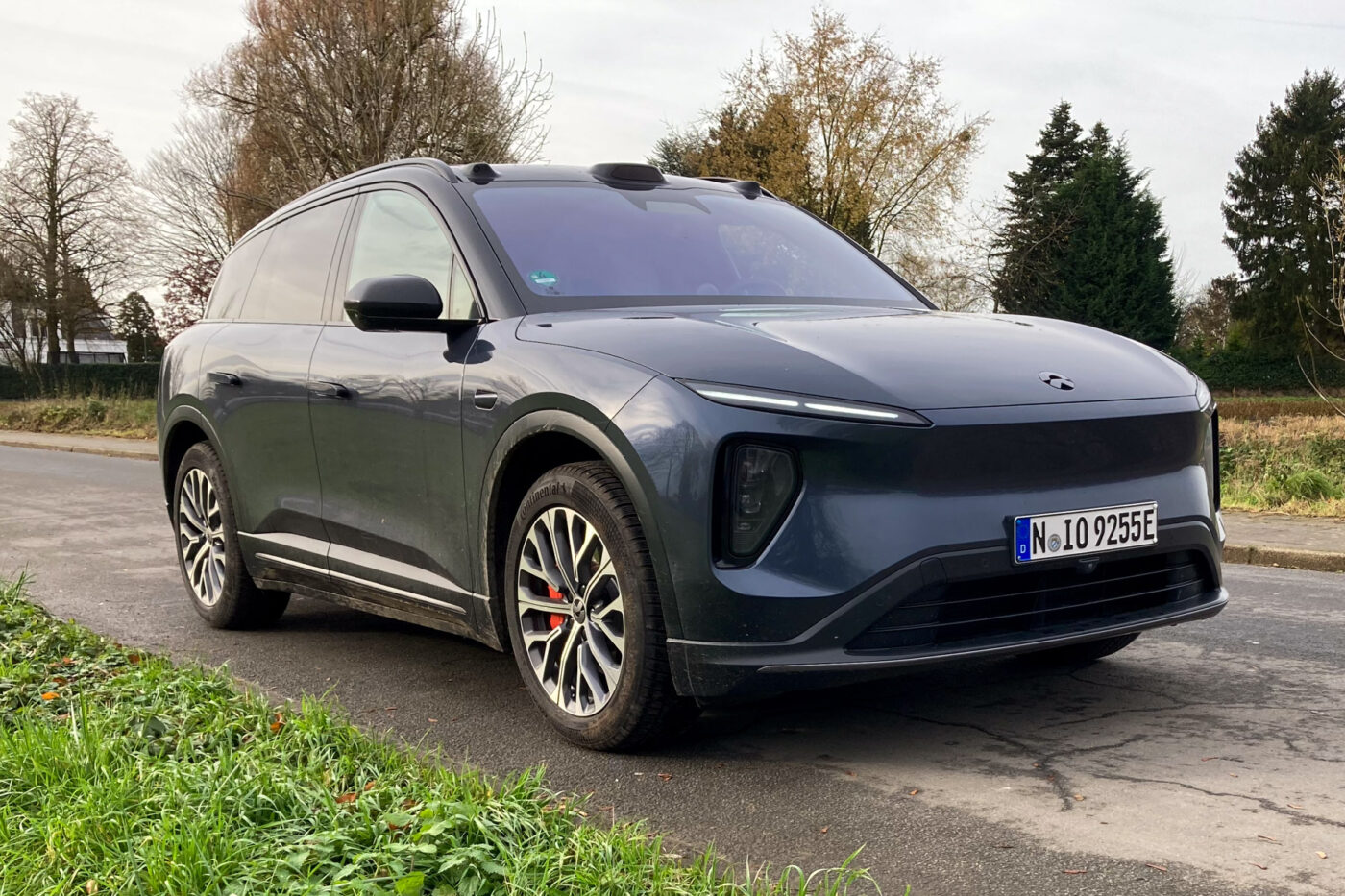
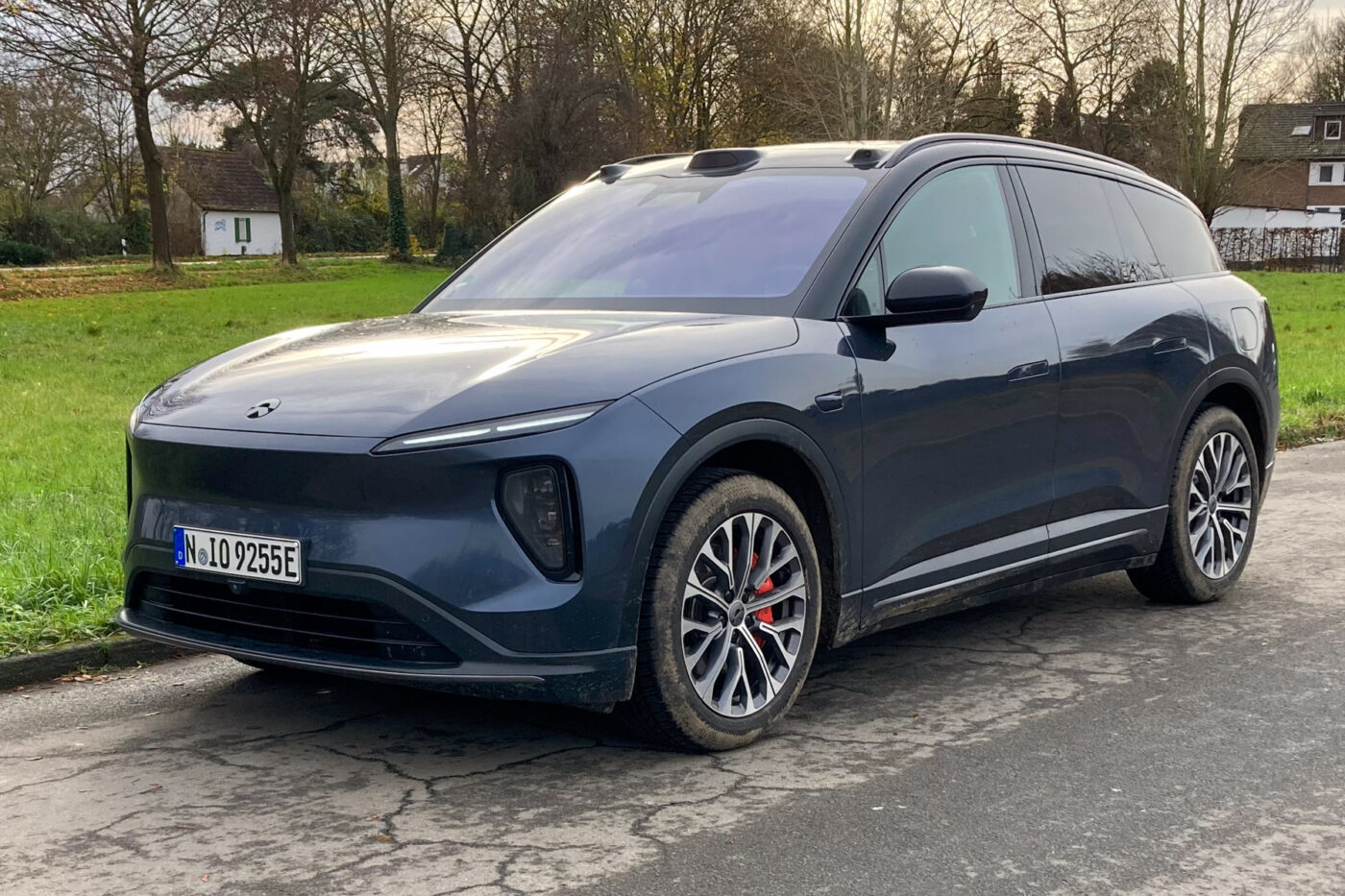
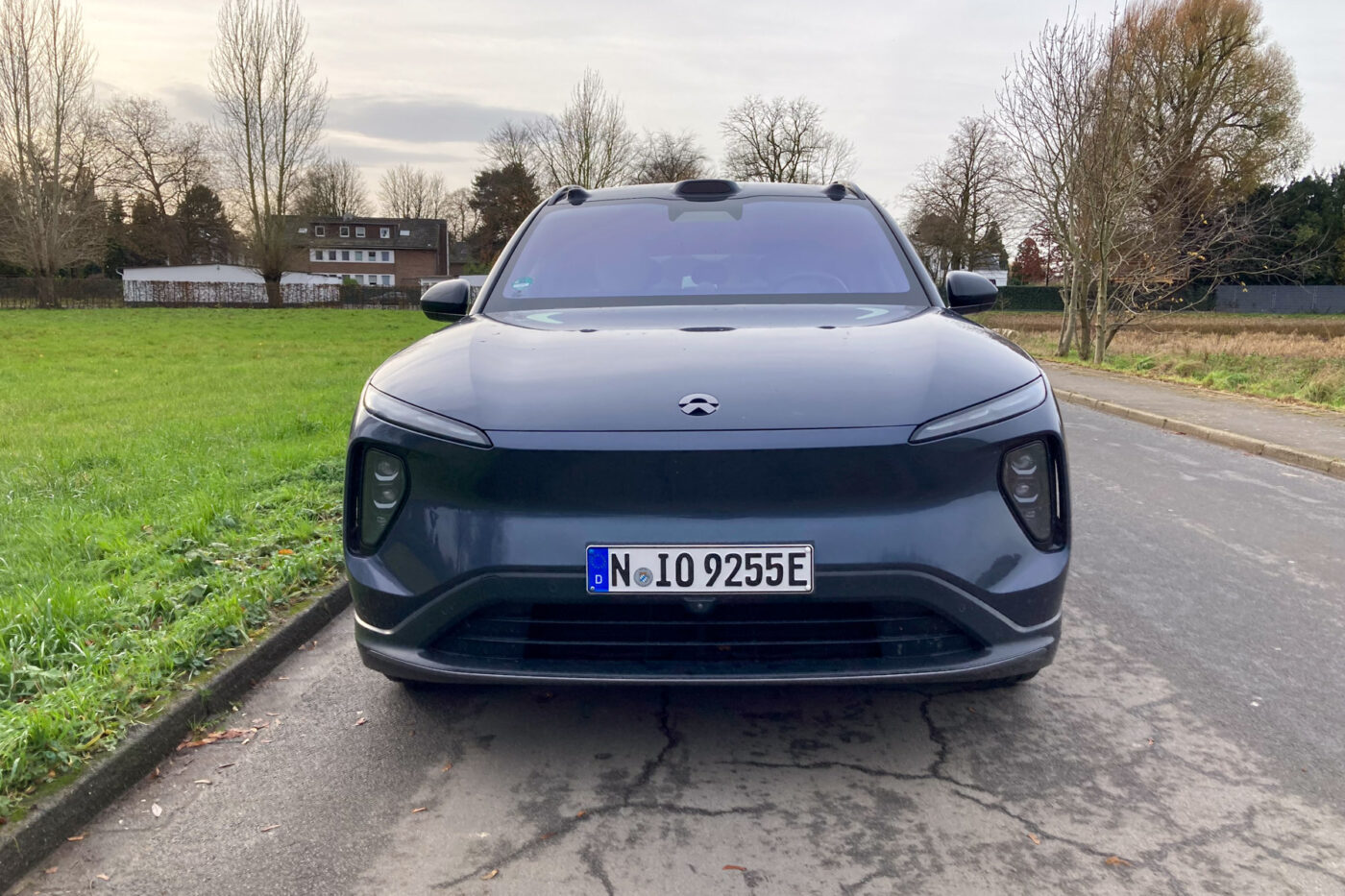
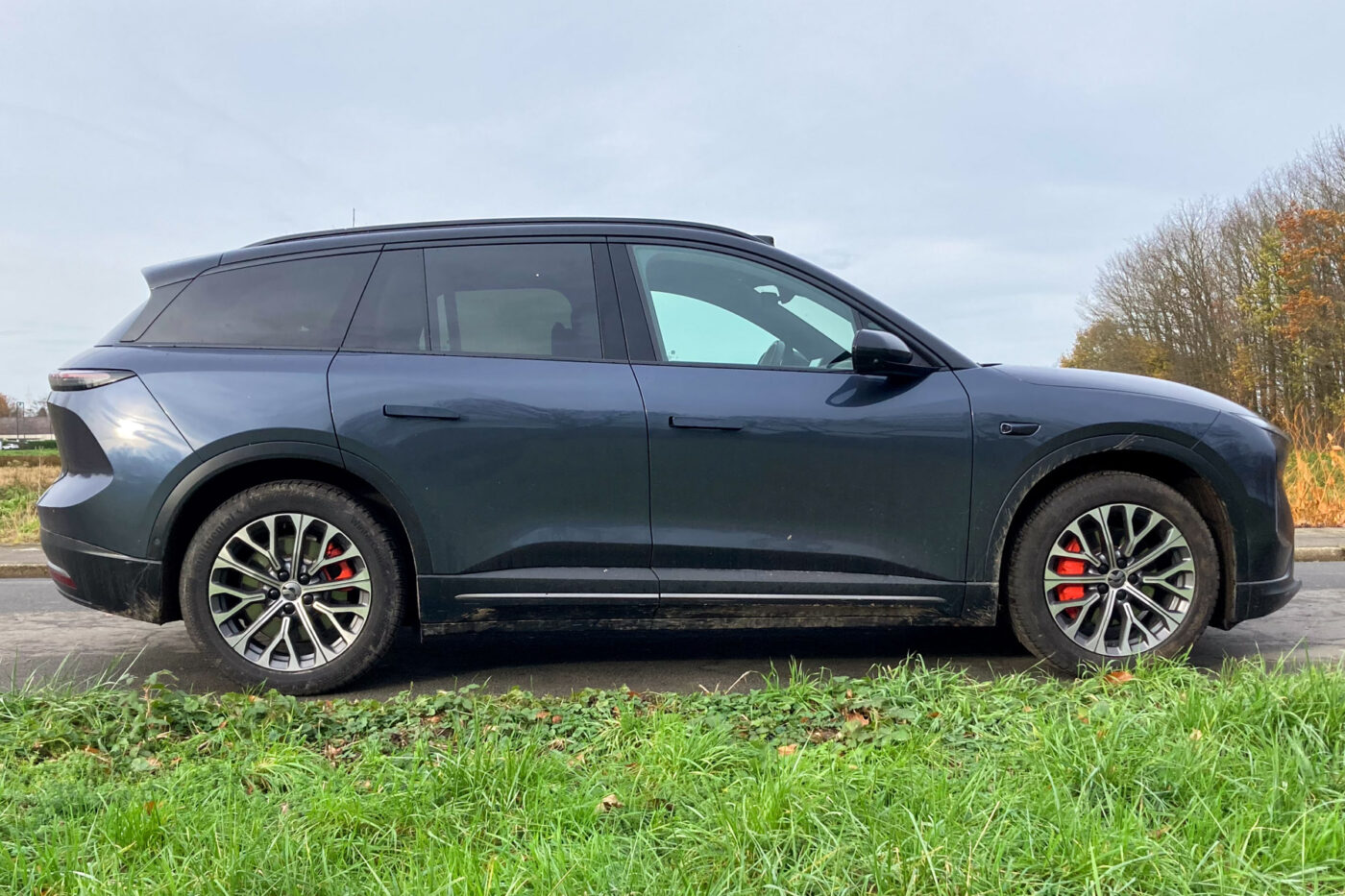
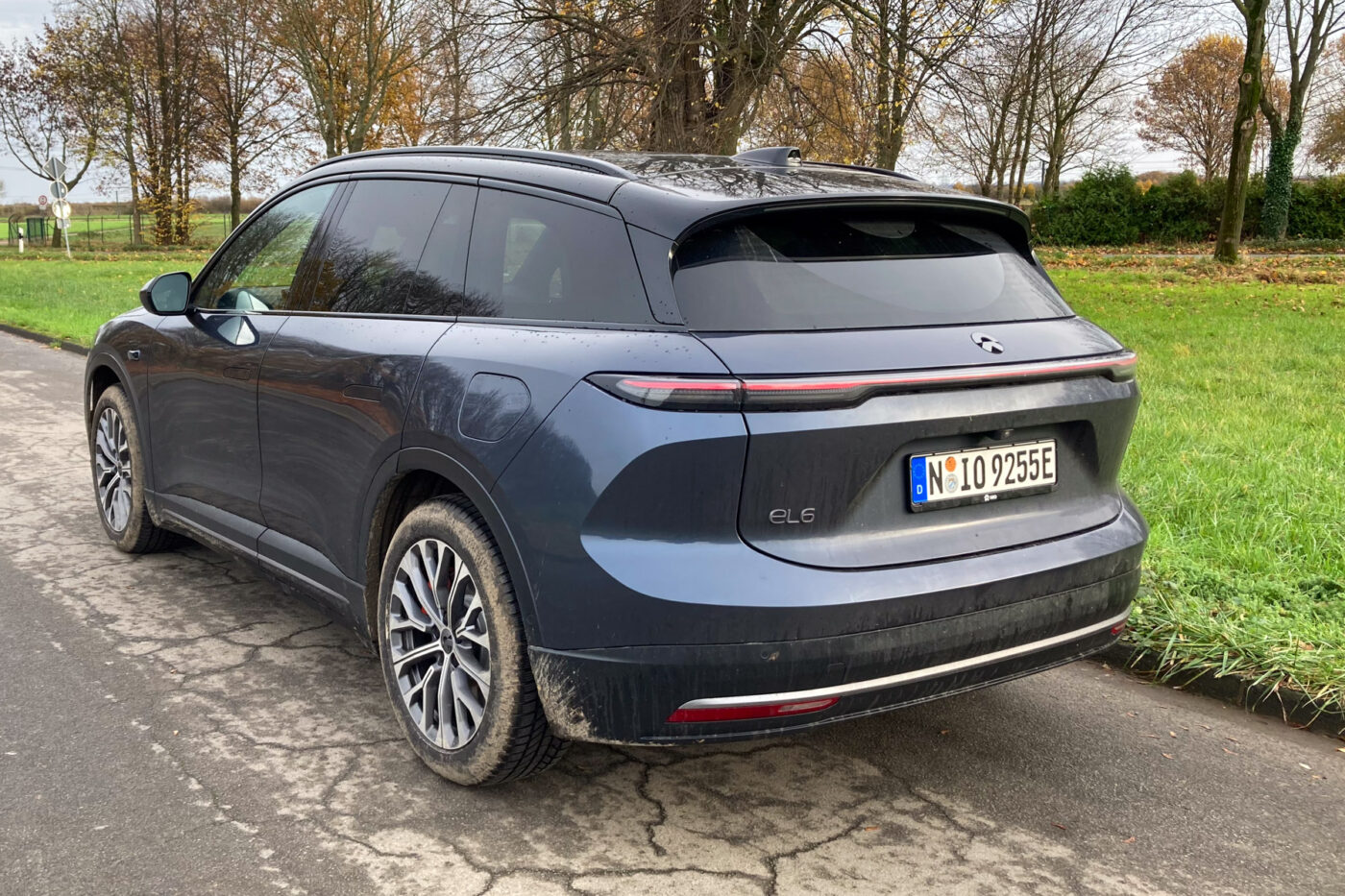
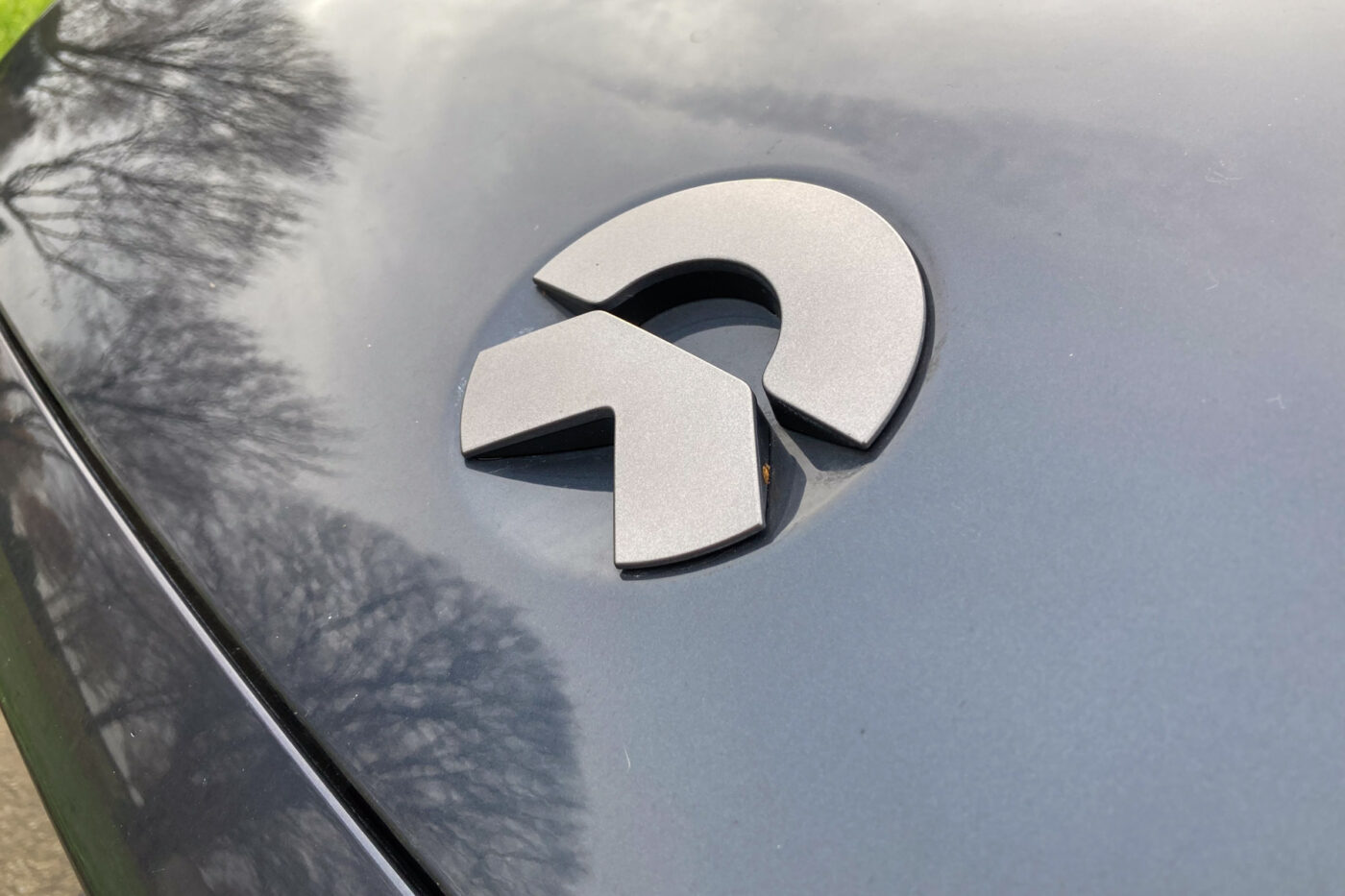
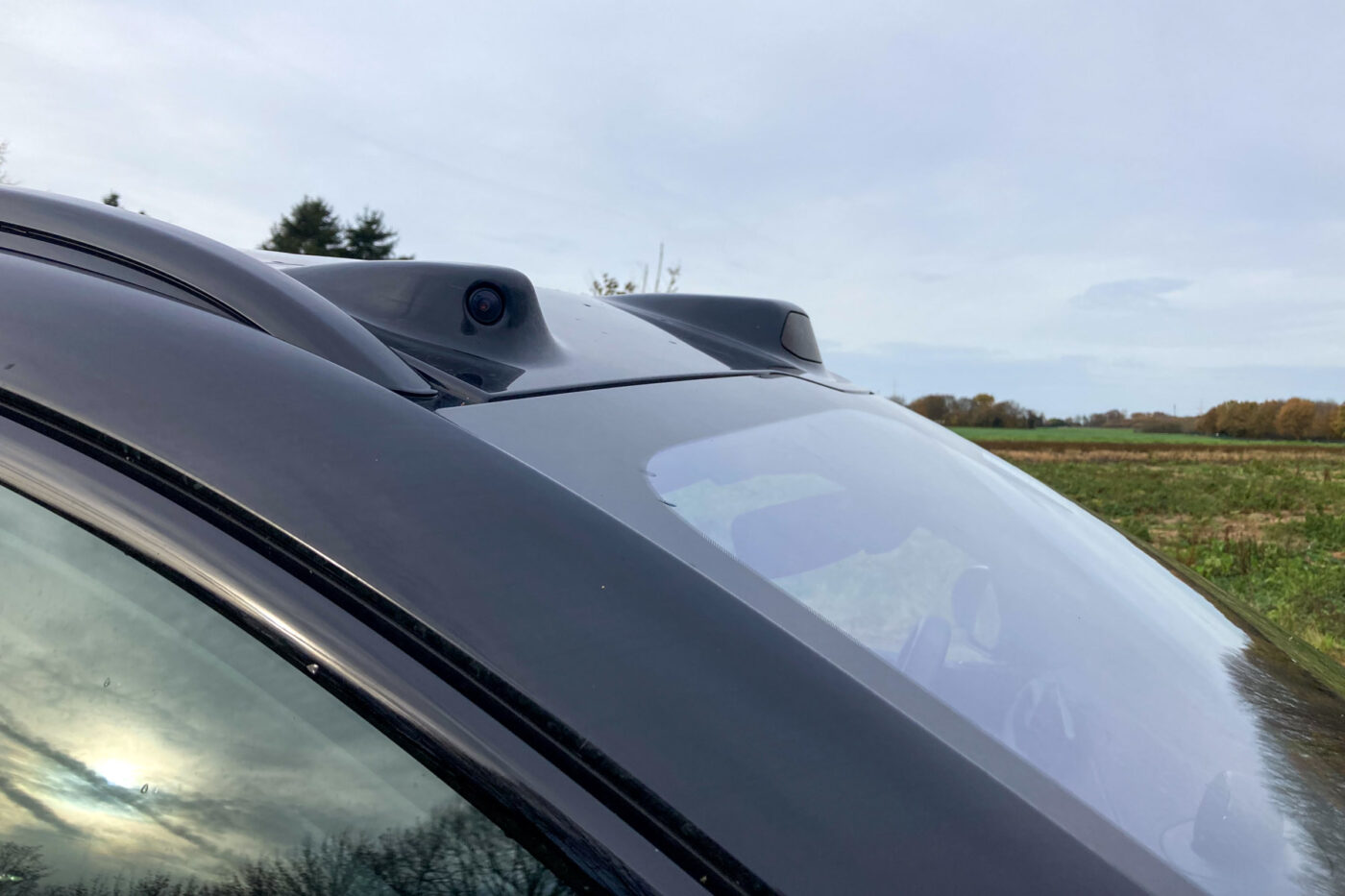
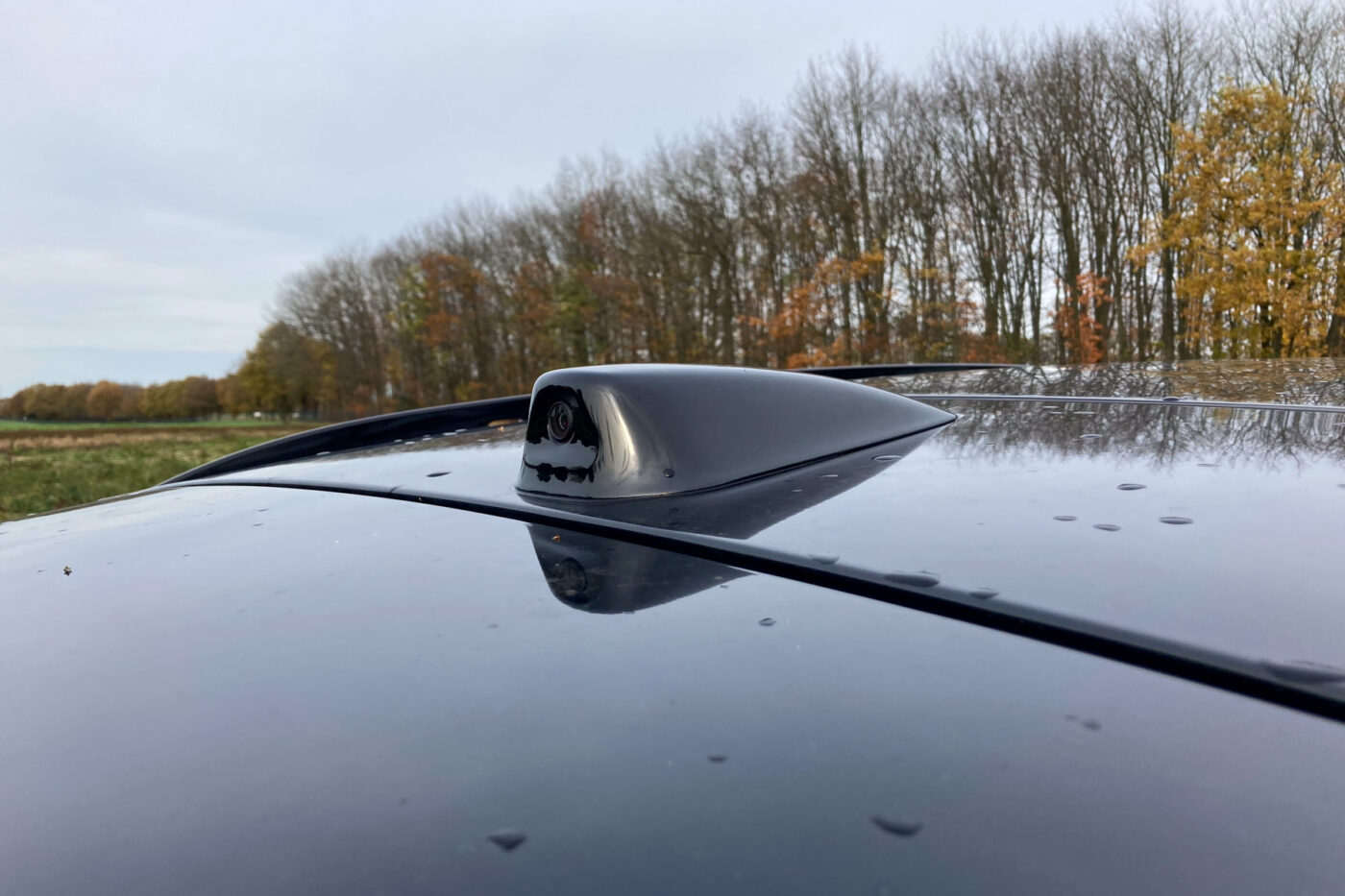
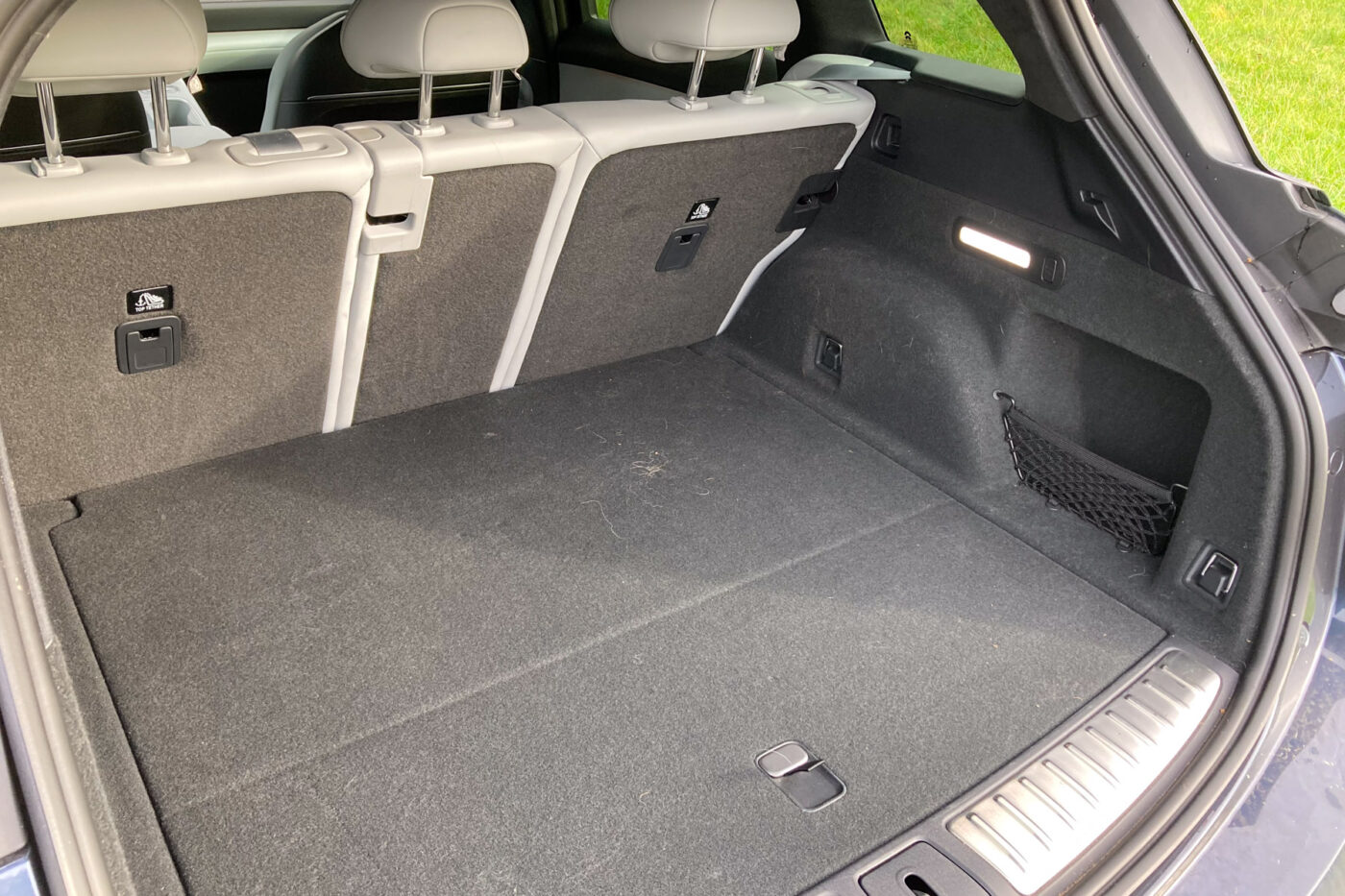
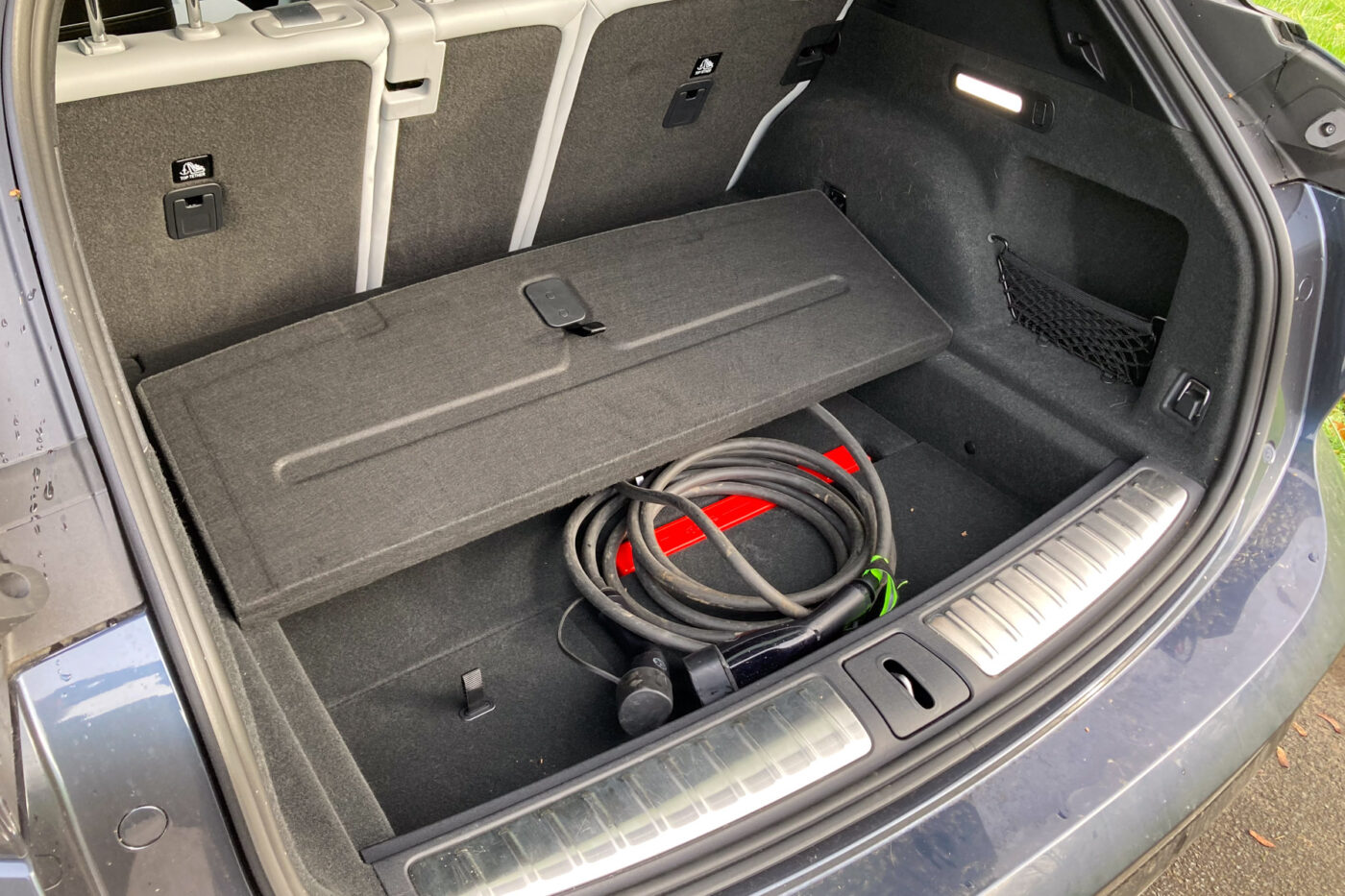
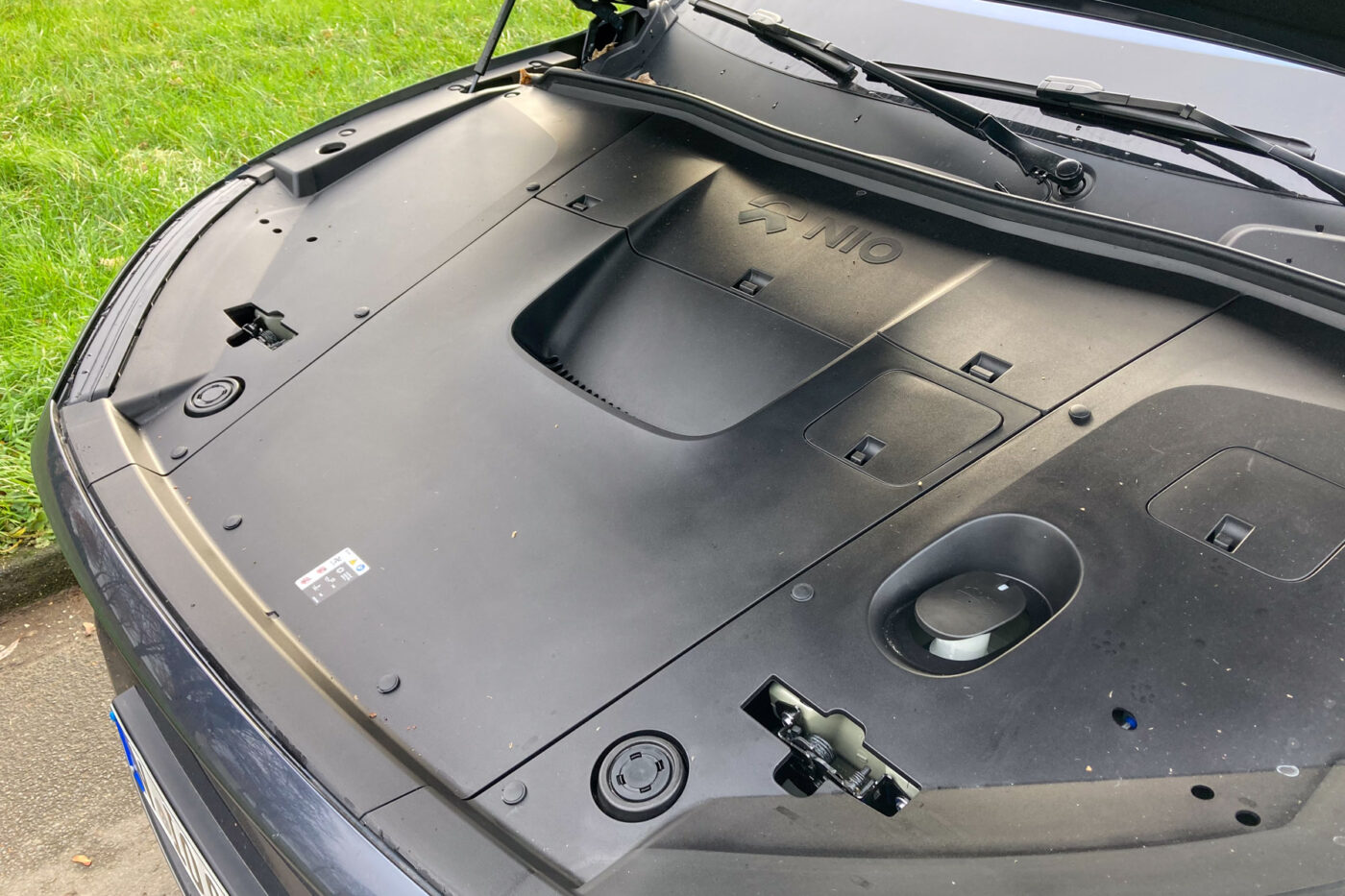
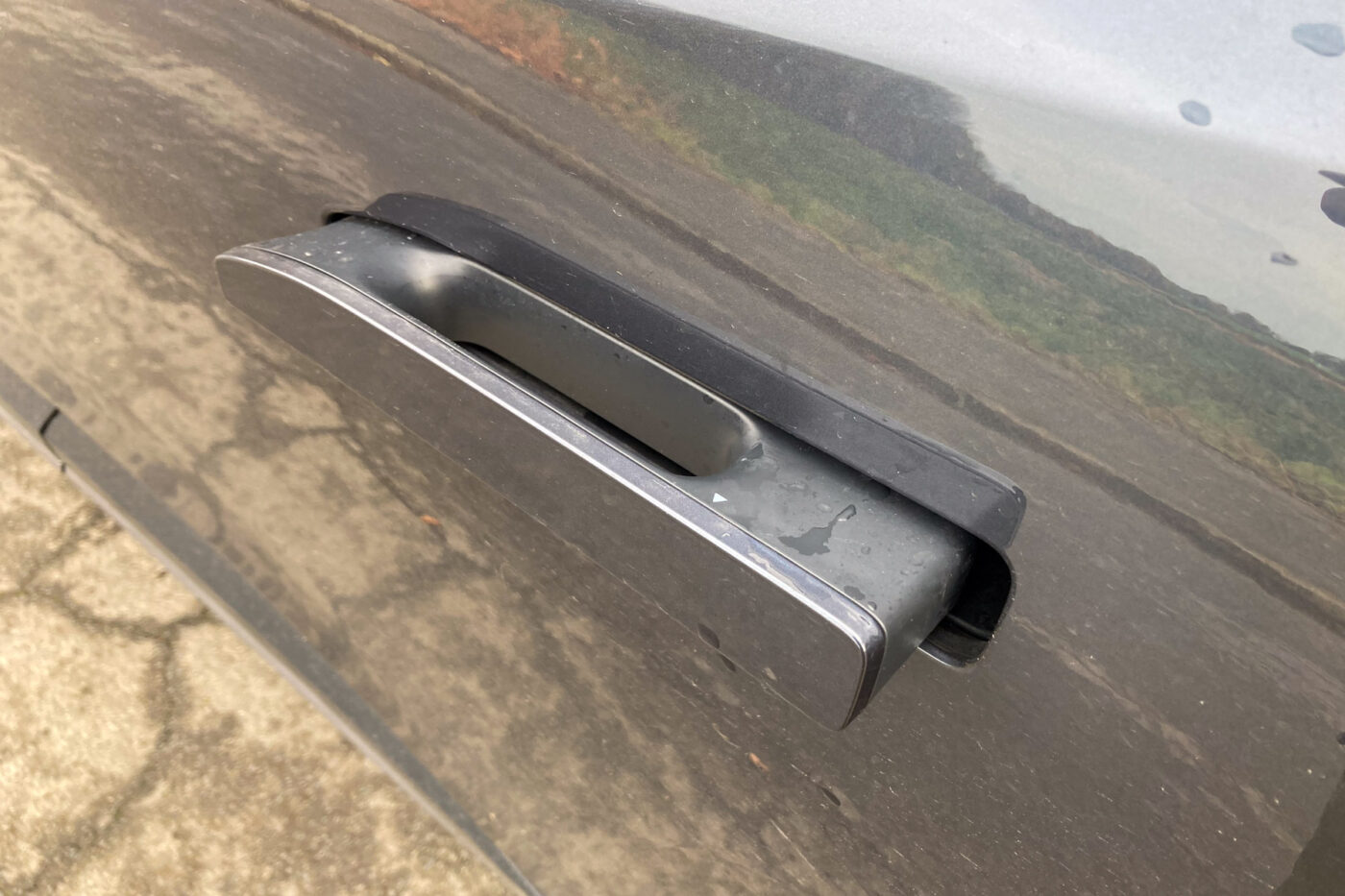
The battery swap itself is very simple: the swap is booked via the vehicle’s route planning, and a Nio employee confirms the booking remotely shortly before arrival. The station recognises the vehicle as soon as it arrives and opens the roller shutters. Once the car is parked in the marked area in front of the station, the driver hands over control with a tap on the touchscreen, and the car reverses into the station autonomously. The swap is ordered for a fee via the central infotainment touchscreen, and the swap process begins. It took exactly five minutes from relinquishing control of the vehicle to (manually) pulling out of the car park. It’s clear that you can’t charge a battery from 25 to 90 per cent that quickly in the foreseeable future!
However, the power swap stations are usually not located directly on the motorway, but at car parks or car parks close to the motorway so that a station can be reached from both directions – ideally, of course, they are located at a motorway junction so that four directions can be served. In the case of Viernheim, this is the Viernheim junction of the A6 and A659 motorways. However, the journey to the shopping centre car park involves a detour of several kilometres. Even though the battery swap itself only took five minutes, it took me almost 20 minutes from the exit of the A6 motorway to the slip road – and there was a small traffic jam in the rush hour at eight o’clock. However, 20 minutes is definitely doable for a very fast-charging electric car and a free charging station right next to the motorway – even if it’s probably not 90 per cent.
Two swaps in one day
Having such a full battery has a big advantage for me: it saves me another safety charging stop for the return journey, which might otherwise have been necessary at EnBW in Rutesheim. I made it to Sindelfingen with 90 per cent and back to Viernheim to swap the battery again on the way to Frankfurt.
A few hours later, this also works without any problems. However, the second stop of the day in Viernheim highlights a disadvantage: you have to stay in the car during the battery swap and are not allowed to open the doors. So we have to wait for the five-minute swap and then find a free parking space in the shopping centre car park – it’s after 7 p.m. and time for dinner. The entire break in Viernheim thus took almost 40 minutes – during this time, instead of using the power swap, you could have charged at the Tesla or Allego charging points, which are also installed in the Rhein-Neckar-Center car park. Without ‘waiting time’ during the battery swap.
A brief summary after day 1: The almost 640 kilometres on this day went without any problems or major delays that could be attributed to the car. I would have taken a breakfast break with coffee anyway, but it could have been much shorter for the car. I would also have planned a break for dinner, so there was no loss of time due to the car here either. And the first battery swap in Viernheim saved time, because a corresponding charging stop there (or later near Sindelfingen) would have taken longer with the EL6’s charging capacity, even with a shorter journey to and from the hotel.
The next morning, we travelled from the hotel in Frankfurt to the BYD event location in Offenbach – at this point, we would like to refer again to the driving report of the Sealion 7 that was written there. The return journey to Düsseldorf is scheduled for the afternoon. The EL6 plans to arrived with 14 per cent – but since I don’t have a wallbox at home, I decided to change the battery in Hilden. Although this is an ‘older’ second-generation station (there is a new PSS 3.0 in Viernheim), the swap also took just five minutes. So, with a quick detour, the Nio is at the door with a charge level of 82 per cent instead of 14 per cent. That means over 900 kilometres in two days with only one real charging stop, but with three battery changes.
Trip 2: Düsseldorf – Stuttgart – Düsseldorf
A few days after the Sindelfingen-Frankfurt trip, another long-distance journey was on the agenda, this time to the Stuttgart area. As I was able to charge the battery to 100 per cent at a nearby public charging station before taking off, I made it to Viernheim without stopping, where I still had 22 per cent or 78 kilometres left when I arrived. Even on a Friday evening, when there can be waiting times at charging points (I experienced this myself last winter with the Mercedes EQE SUV 350 4MATIC), there was no waiting time for the swap. Unlike with fast charging, the temperature doesn’t matter either.
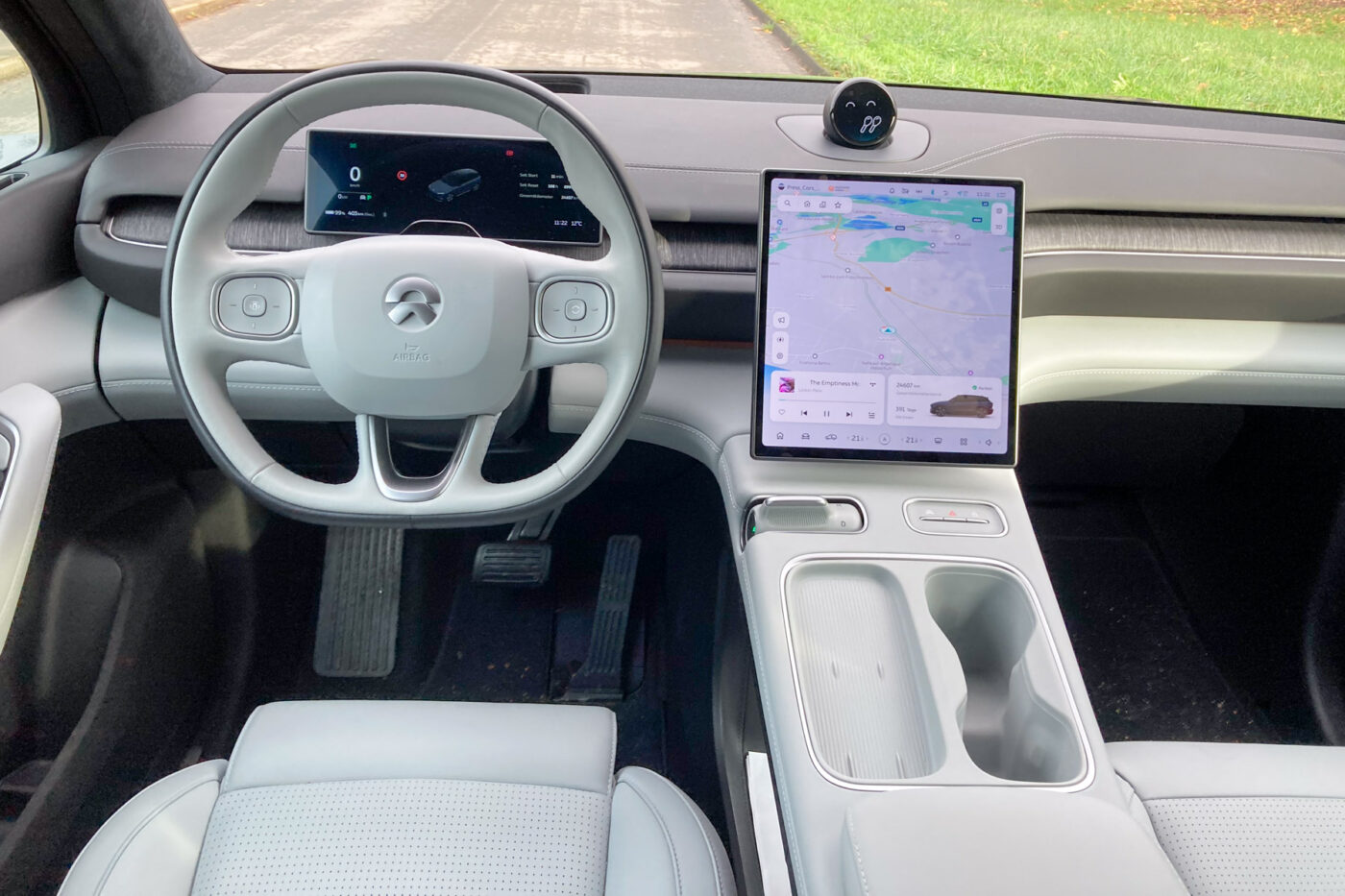
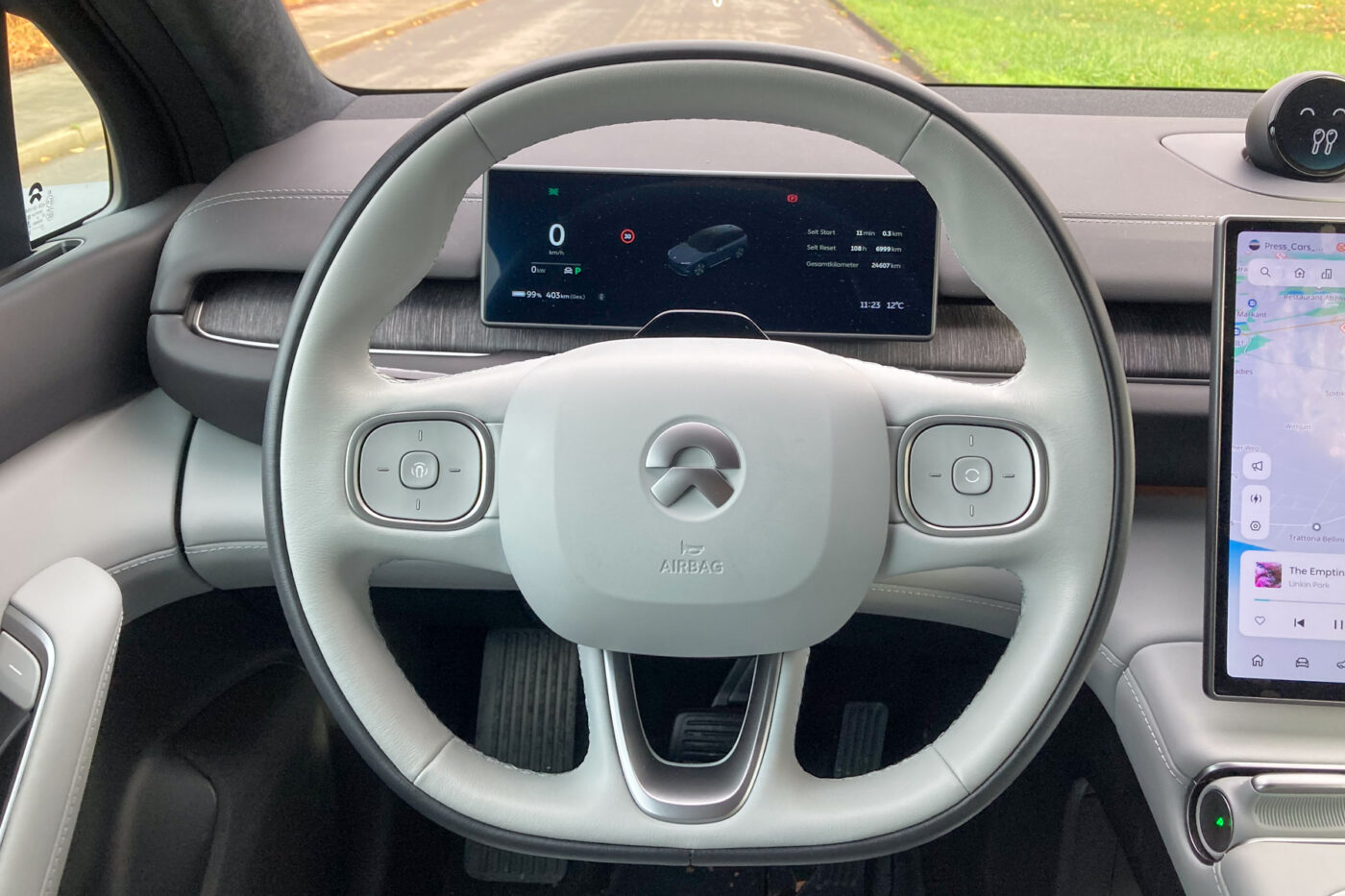
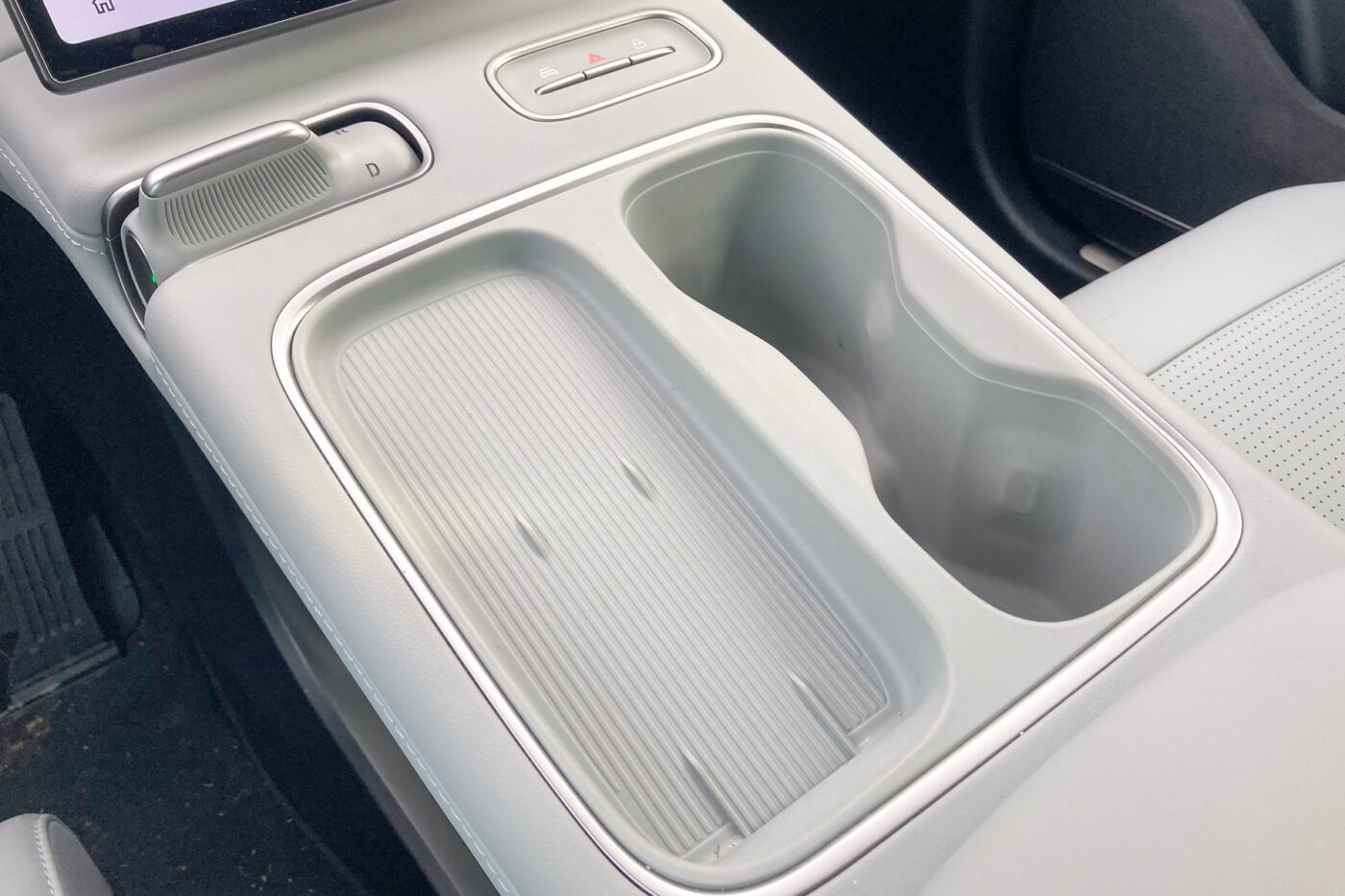
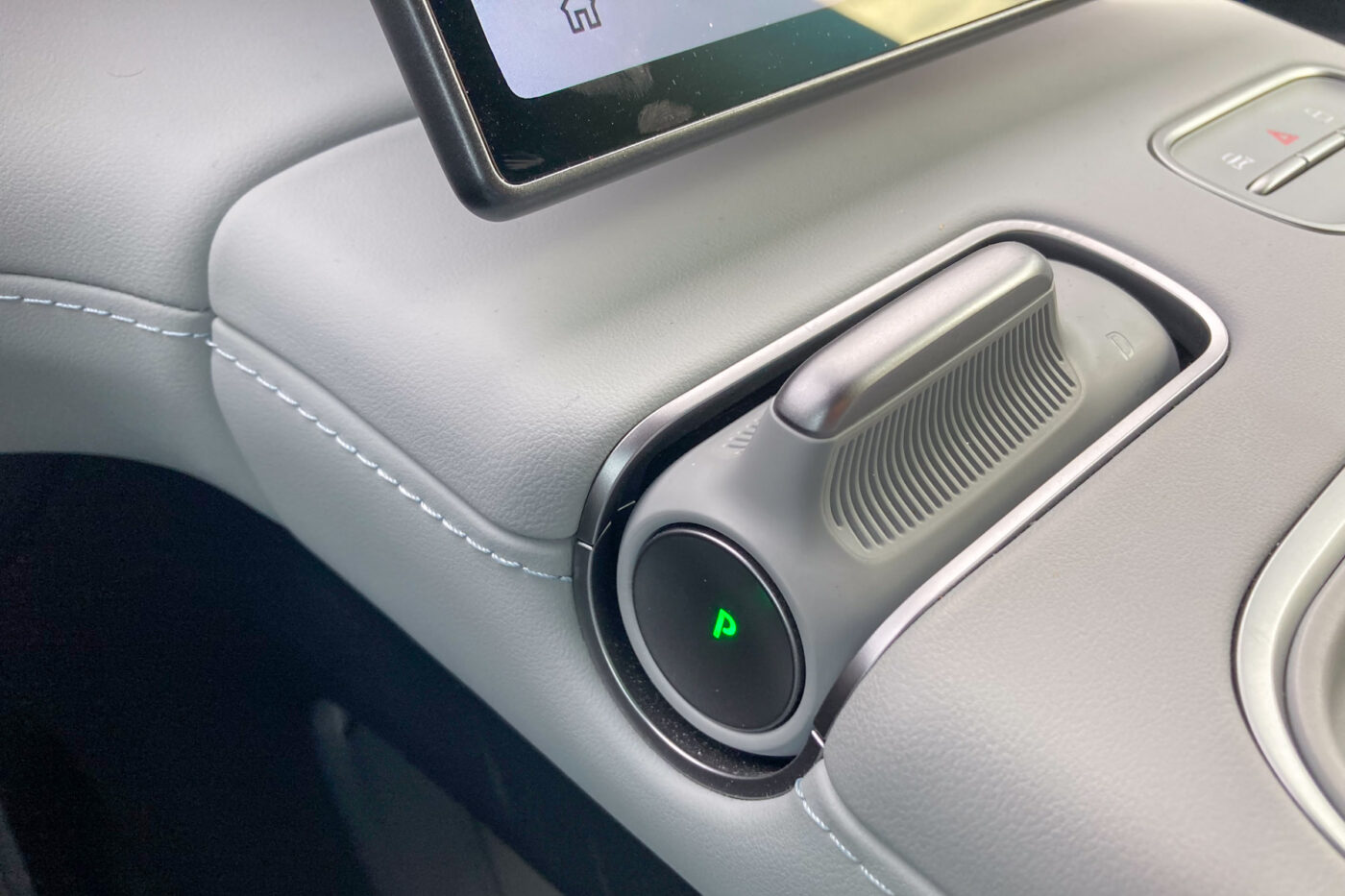
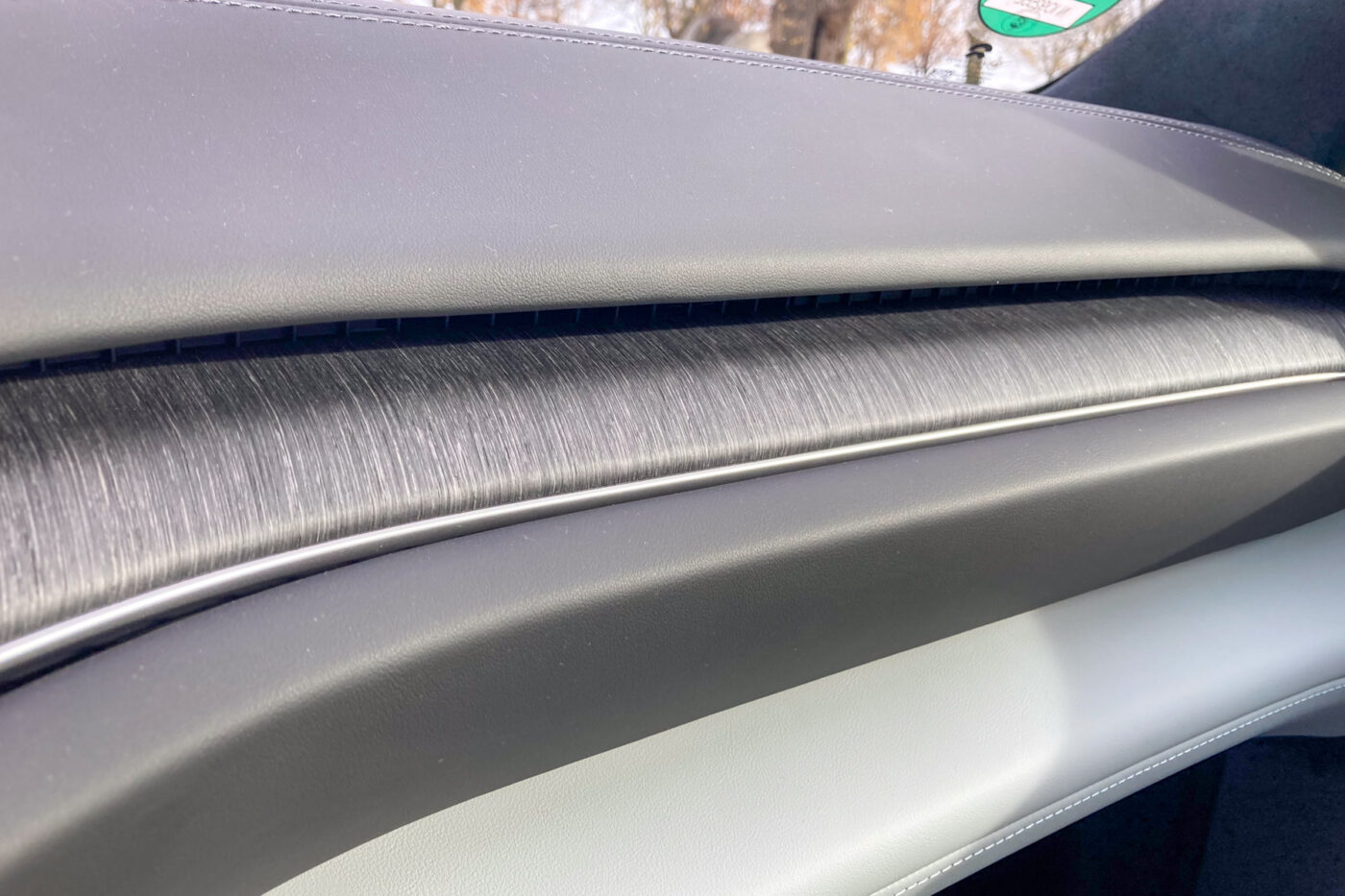
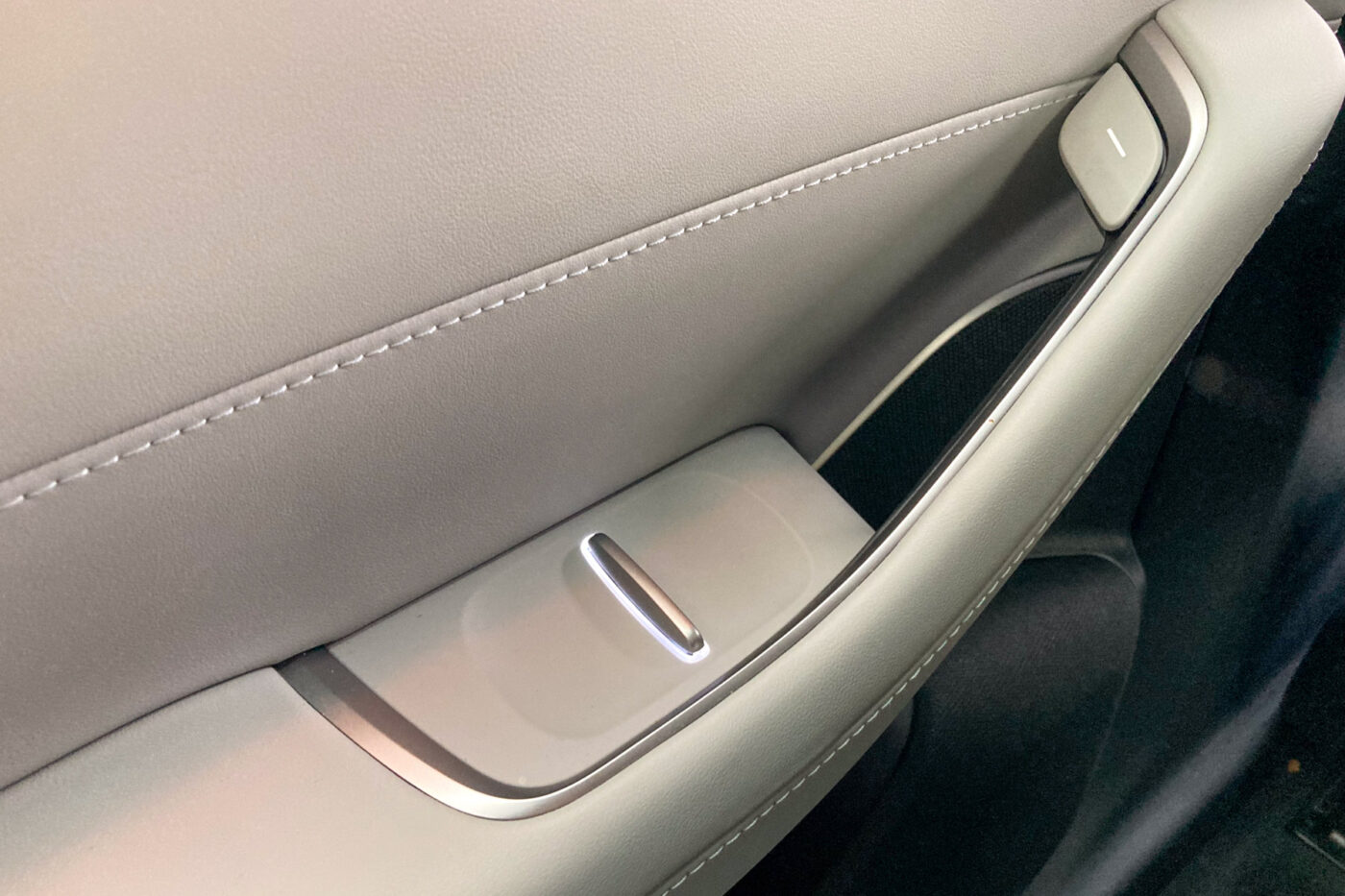
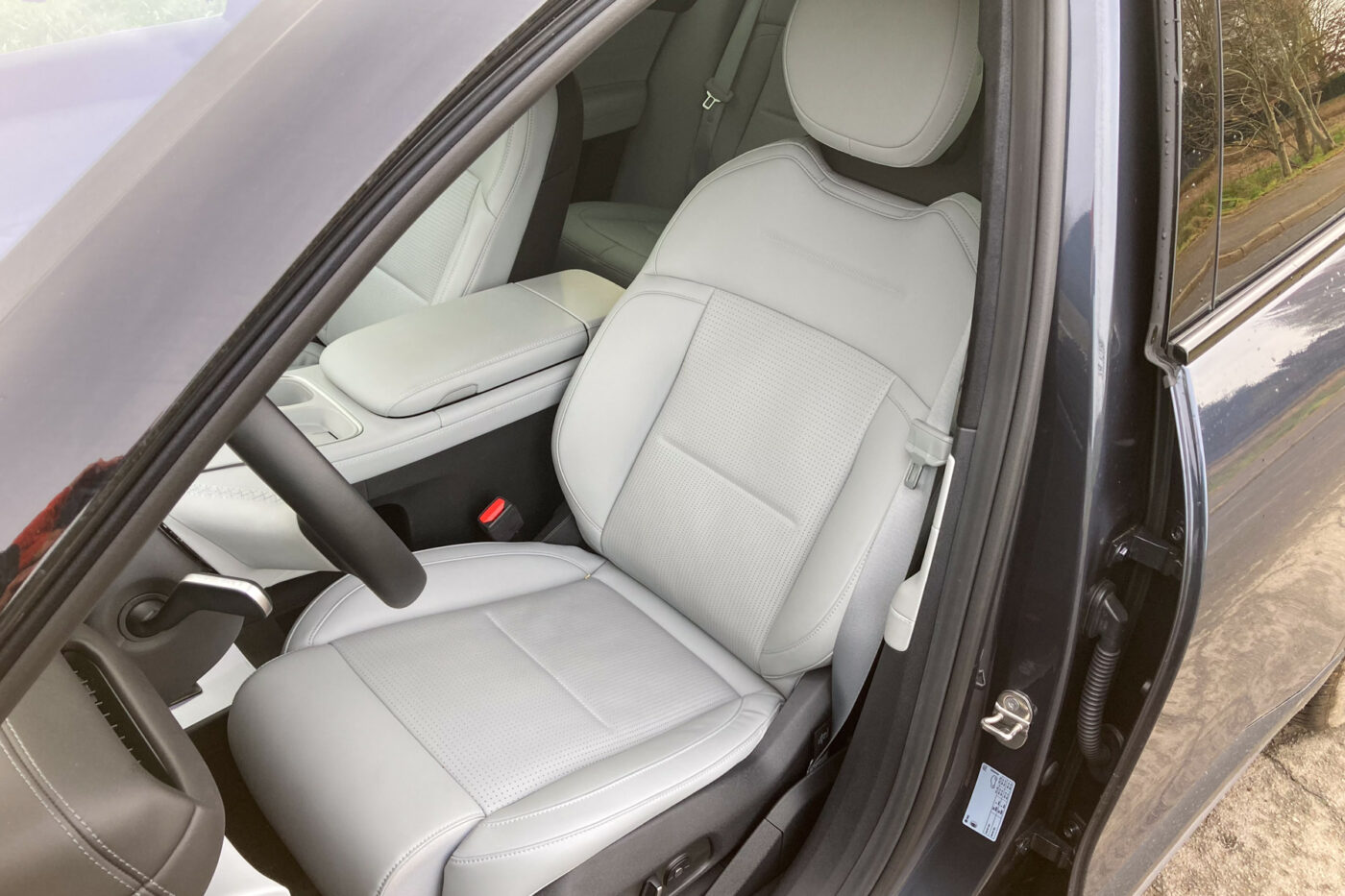
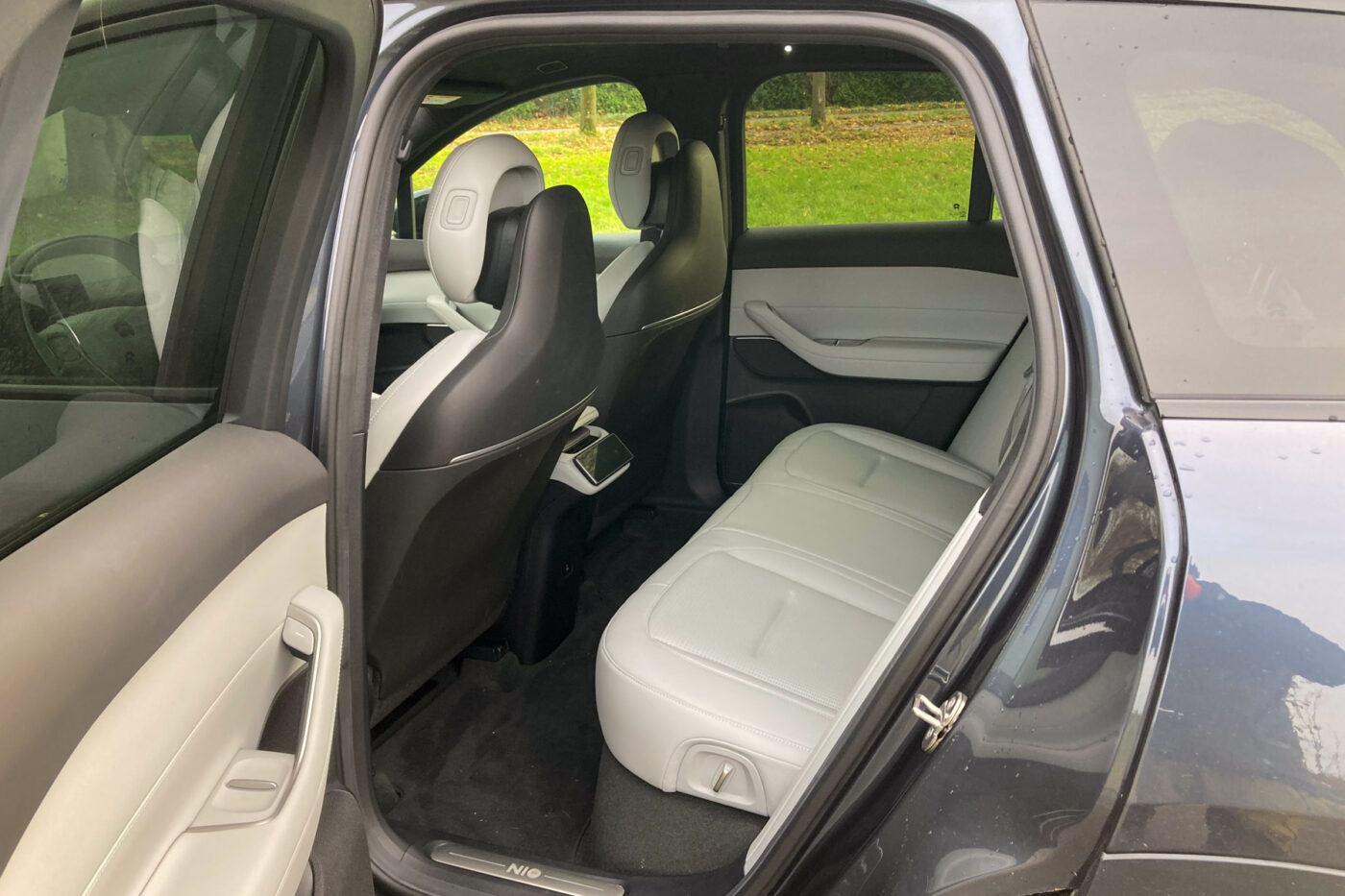
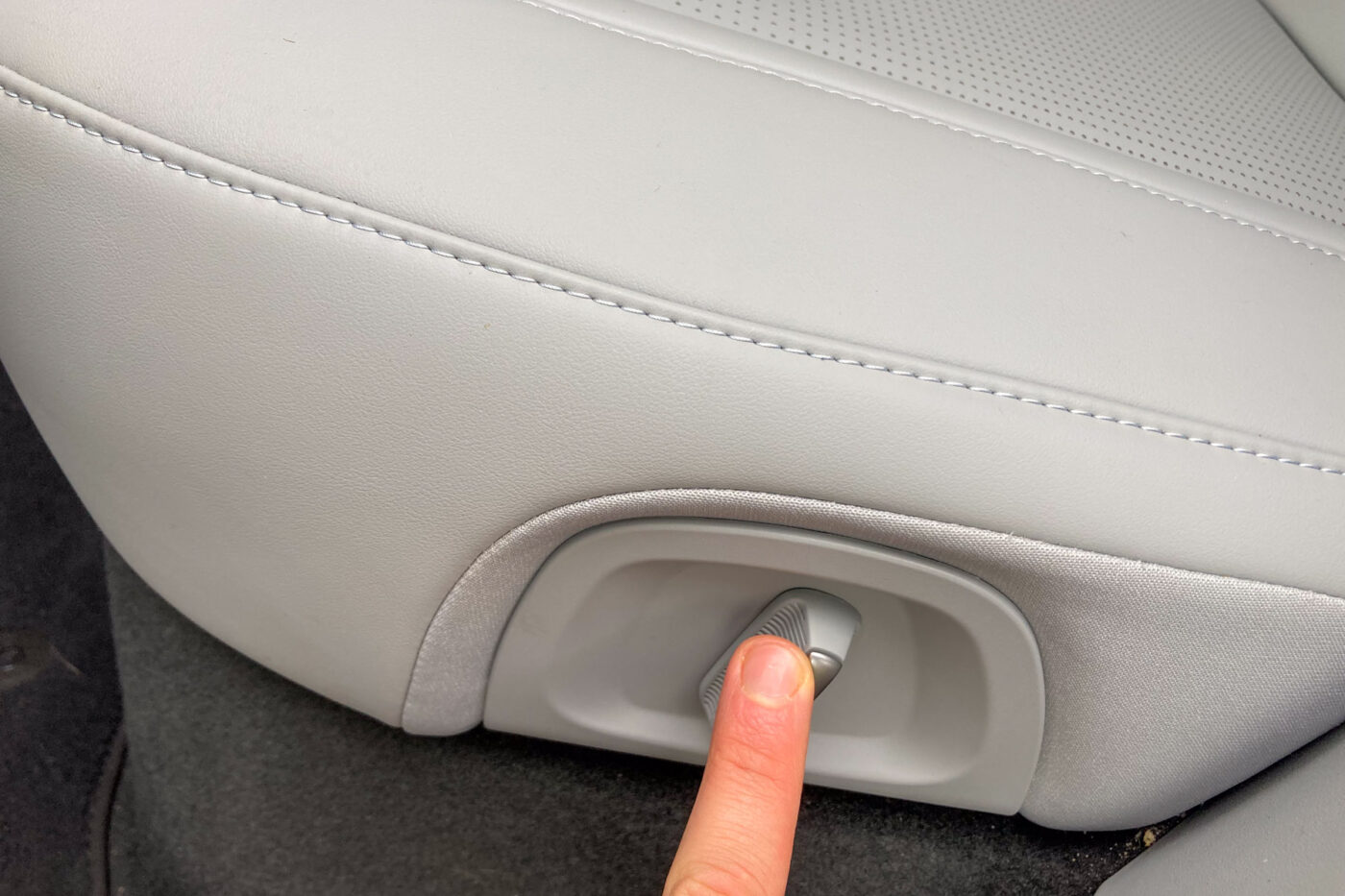
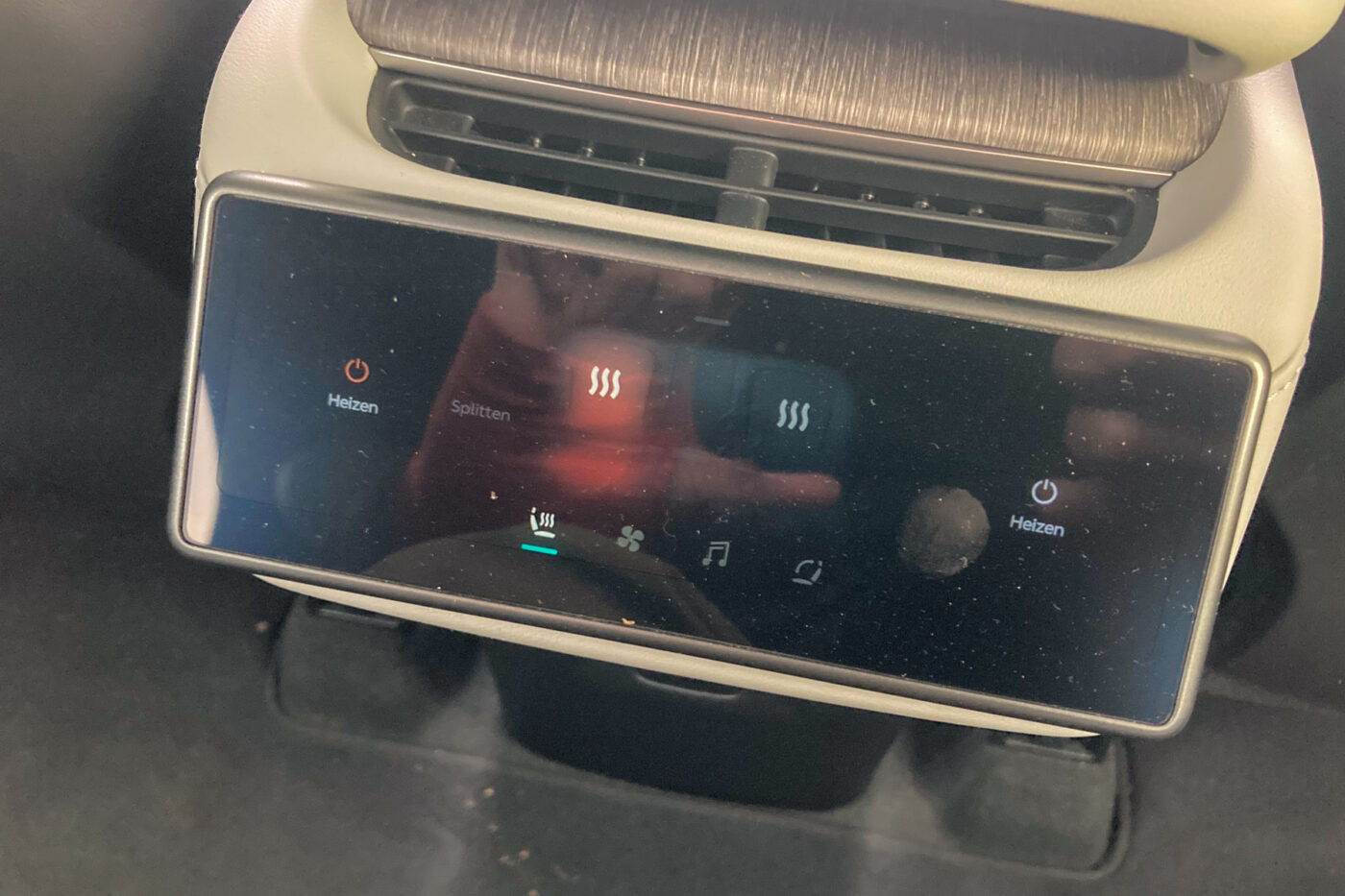
The only thing that matters is the location of the power swap stations. I was lucky in two ways. Firstly, Nio put the PPS 3.0 in Viernheim into operation shortly before our test. Before that, the only real alternative on the route from the Rhineland to the Stuttgart area would have been the PSS in Waldlaubersheim – but that would have meant a detour via the A61 instead of the A3. And secondly, I haven’t had any significant traffic jams on the almost 1,100 kilometres of motorway so far. Power Swap Stations are still so rare in Germany that you don’t have much flexibility when planning your route. There are often traffic jams in the area around Viernheim, Mannheim and Hockenheim. The alternative would be the A5 motorway, which runs parallel. But there is no power swap station there. So you might save time in the traffic jam, but then you’ll be standing at the charging station for over half an hour…
That was exactly what happened on the return journey from Stuttgart. After another problem-free battery swap in Viernheim (the fifth in total), the situation was similar to the return journey from Frankfurt: planned arrival with around 15 per cent, possibly another battery swap in Hilden in order to arrive with enough range for the next few days. However, after a major traffic jam, including a detour, I had to stop in advance purely for biological reasons – which was, of course, used for recharging, specifically at Aral pulse in Bad Honnef. The planned battery swap in Hilden was thus unnecessary, even if it took a while to recharge the EL6. Nevertheless, it was probably quicker than another detour to the Hilden junction to the PSS there and back.
Journey 3: Düsseldorf – Kamen – Düsseldorf
Another trip with the EL6 took me from Düsseldorf to the neighbourhood of Kamen. Of course, the EL6 can cover the distance of just over 200 kilometres without intermediate charging if the battery is sufficiently full. However, if it is not full on departure, one would need to stop to charge – or, in this case, add a significant detour to the Power Swap Station in Dorsten to our route.
A small test that we carried out in Düsseldorf with a fully charged battery shows just how patchy the PSS network still is: How does the EL6 plan really long routes? To our great surprise, it plans a 28-minute charging stop at Aral Pulse in Braunschweig on the Düsseldorf-Berlin route – even though there is a Nio swapping station just a few kilometres further down the road. The car calculated the arrival in Braunschweig with ten per cent. If you select the PPS in Lehre manually, it predicted a three per cent charge level – already very little buffer for 340 kilometres. The Nio thus plans 5:21 hours for 560 kilometres to Berlin, including the charging break. That’s not bad, but it’s also possible with other electric cars.
The car has two charging stops for the 628 kilometres from Düsseldorf to Munich – a total of around one hour and 5:43 hours of pure driving time. Other electric cars can do better than that, and an hour’s charging time is a lot. When we planned a route to Berlin with a Porsche Macan in Metzingen near Stuttgart (with only a half-full battery at the start, mind you), the charging time for 667 kilometres was less than 45 minutes. With a full battery at the start, it would probably have been around 30. And even on test routes abroad, the Nio did not plan a single power swap station, although some stations were available along the route – but at such intervals that they would not have given any time advantage. For 851 kilometres to Copenhagen, the EL6 planned to charge for 1:33 hours spread over three stops, and for 1,476 kilometres to Barcelona, it planned six charging stops with a total charging time of 3:29 hours.
Conclusion Power Swap Stations
If the calculated test routes are taken into account, the added value of the Power Swap Stations is manageable – at least at the networks’ current expansion stage. Of course, the reality on the road is different; unplanned (charging) breaks can shift the calculation so that the car re-schedules a power swap station that was not taken into account (for example, the station in Lehre that was barely reached).
On the other hand, the swaps actually carried out in Viernheim have shown how a well-placed station (for your own requirements) can change the whole picture. Viernheim was perfect for my journeys to Sindelfingen and Stuttgart, even with the return journey on the same day. However, if I had carried out the test just two weeks earlier, the result might have been completely different – if I had had to take a diversion via Waldlaubersheim. So the battery swap saved a lot of time over the 2,000 kilometres, no question – but this is also due to the charging behaviour of the EL6, which we will come to in a moment in the conclusion about the car.
However, after these experiences, I don’t necessarily see the big advantage of the power swap on long journeys. After driving for three hours, I take a short break anyway, during which time the car can also charge – just for 20 rather than 40 minutes. Waiting for the power swap first and then taking a break is not really a gain in comfort or time – the car can also charge during this time.
Where power swapping does make sense, however, is along commuter routes, for example on the main roads into major cities. If you’re a lamppost parker like me and can swap the battery in five minutes without having to make a diversion on the way to work, that’s a huge time saver. Because that’s what happens when I need power but don’t want to take a long break – in other words, in everyday life. However, this also places enormous demands on the density of the network: I wouldn’t take any real detours for this, because then well-placed fast chargers (for example at supermarket car parks) can also cover my energy requirements without any real loss of time.
Conclusion Nio EL6
I really enjoyed driving the 2,000 kilometres in the EL6. The car is comfortable, the seats are very cosy and a massage function comes standard. But what really made the long journeys enjoyable was Nio’s approach to software updates: Nio listens to its ‘community’ and implements changes relatively quickly. While the software and the beeping of the assistance systems were still really annoying when we tested the ET5 last year, the software made a completely different impression on the first drive in the EL8 this summer. You no longer feel monitored and controlled by the car. If the Nio still beeps or the Nomi voice assistant responds, then it is generally justified.
However, the software is not yet perfect. In our test, for example, there were occasional inconsistencies in the remaining range. One of several examples: with a charge level of 38 per cent, the car still estimated a remaining range of 130 kilometres on the driver’s display. However, the route guidance in the centre display indicated that we would arrive in 124 kilometres with a charge level of ten per cent – that doesn’t add up. In the end, the route guidance was right, but this is completely unnecessary uncertainty for an EV novice.
Especially as the range even with the large battery (100 kWh gross, 90 kWh net) is not exactly the highest. Depending on the cruising speed on the motorway and the outside temperature, we roughly consumed between 22 and 27 kWh/100 km, with just under 20 kWh/100 km possible at slightly higher temperatures or on country roads – in summer it could be even less. In our test, this resulted in a range of around 330 to 400 kilometres – with a full battery. As there are usually batteries with a charge level of around 90 per cent at the Power Swap Stations, this is almost 40 kilometres short of the possible range.
While the range depends on the temperatures and your own driving style, the DC charging capacity is a major point of criticism. For a 100 kWh battery, around 130 kW at the peak is not much, especially as the charging curve is not even completely flat. On long journeys, charging stops of 28 minutes are just about acceptable for me personally, but on some of our calculated long journeys, the car has scheduled charging stops of 42 minutes. The new charging system from the EL8 with up to 240 kW (only at charging points with over 500 amps) would be desirable.
The EL6 is not a small car (although, together with the ET5, it is one of the smaller models in the Nio portfolio), but it also offers plenty of space in the front and rear. Four adults can travel very comfortably in the EL6 and also take some luggage with them. Although it doesn’t quite come close to a Model Y in terms of interior space, it can certainly compete with the PPE SUV Porsche Macan and Audi Q6 e-tron – or the EQE SUV also mentioned in the article.
And that is als Nio’s target group: with its high-quality interior, it is more likely to compete against the German premium brands than Tesla in the volume segment. In terms of product, the EL6 doesn’t have to shy away from comparison. In the premium world, however, the brand experience is also purchased. Although Nio makes every effort here with its Nio Houses, it cannot match the brand trust of the established brands. The battery rental business model is also likely to put off many buyers, even if it is easy to do the maths: Up to a 72-month holding period, battery hire is cheaper than buying.
Ultimately, however, the same applies to the Nio EL6 as to all other electric cars – with or without battery replacement: just get in and try it out.

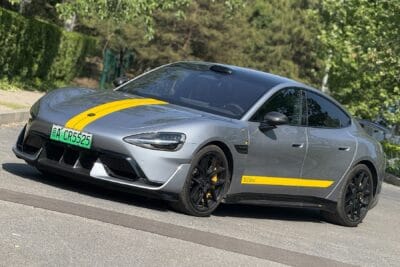

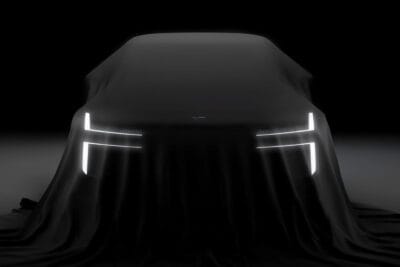
0 Comments